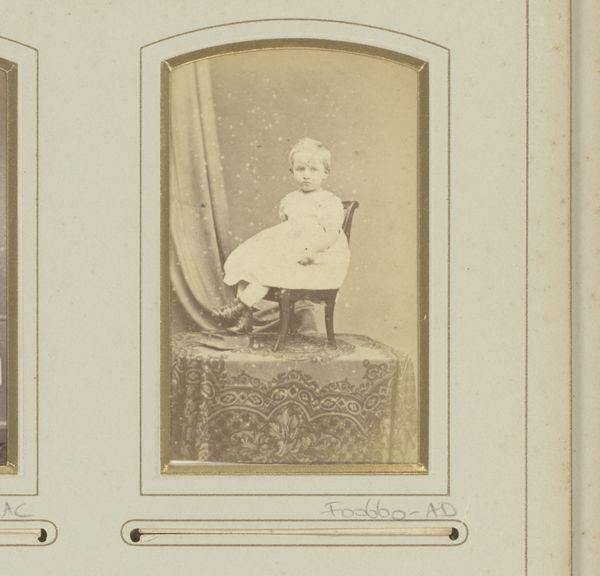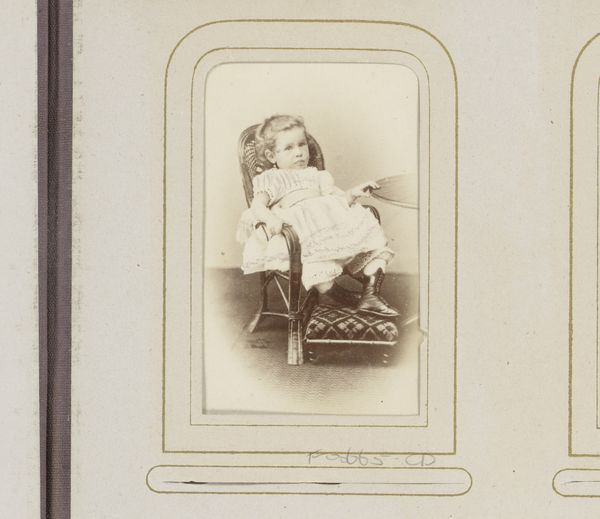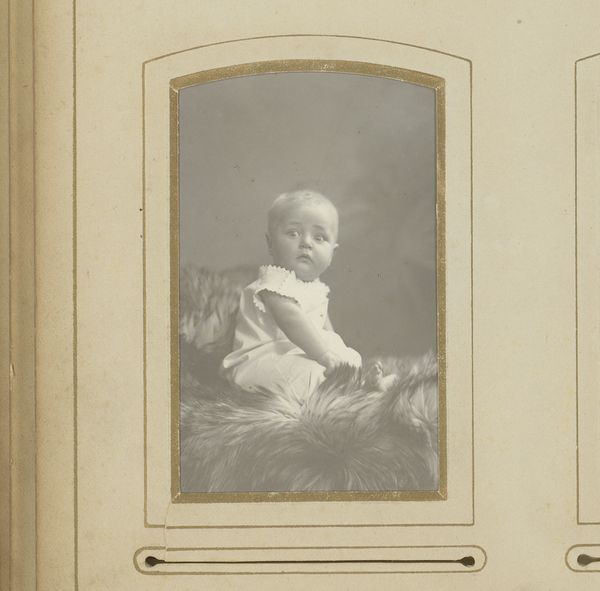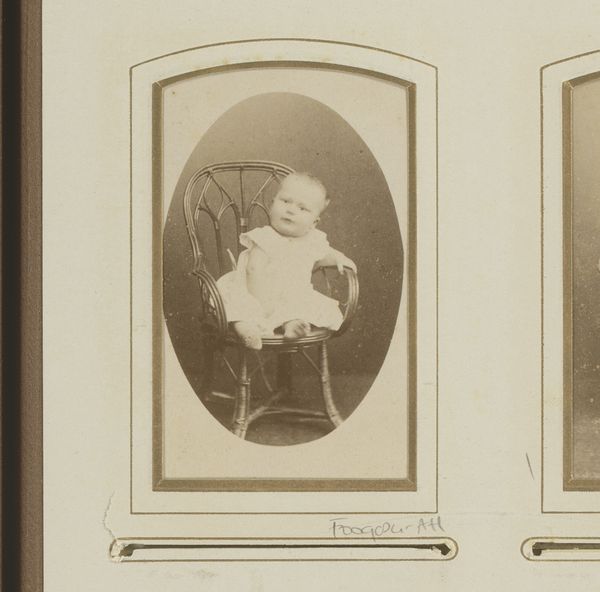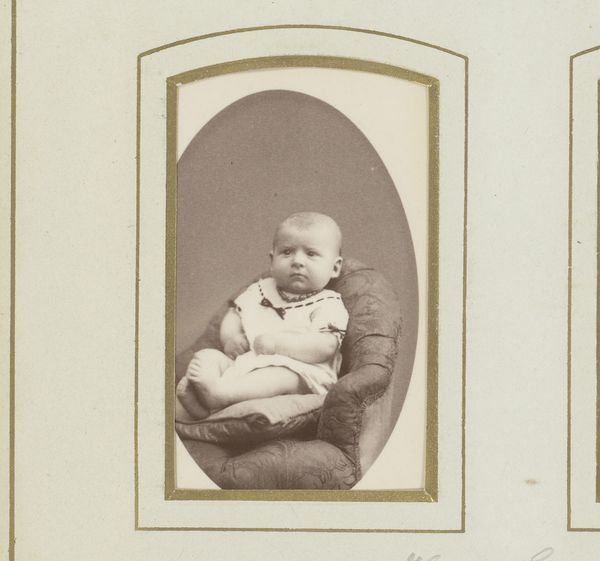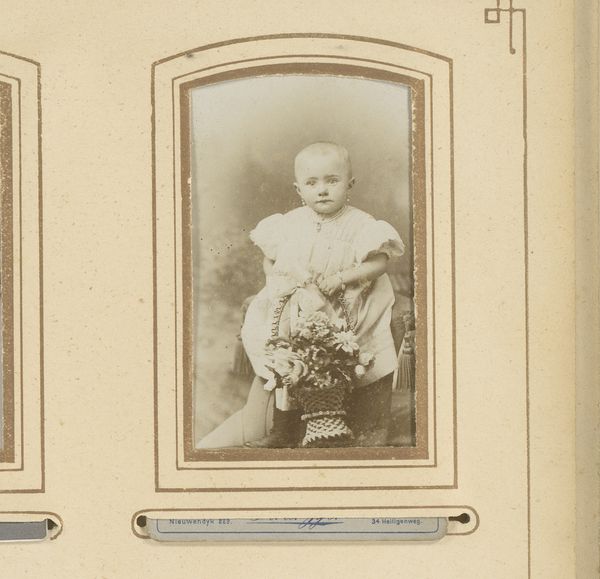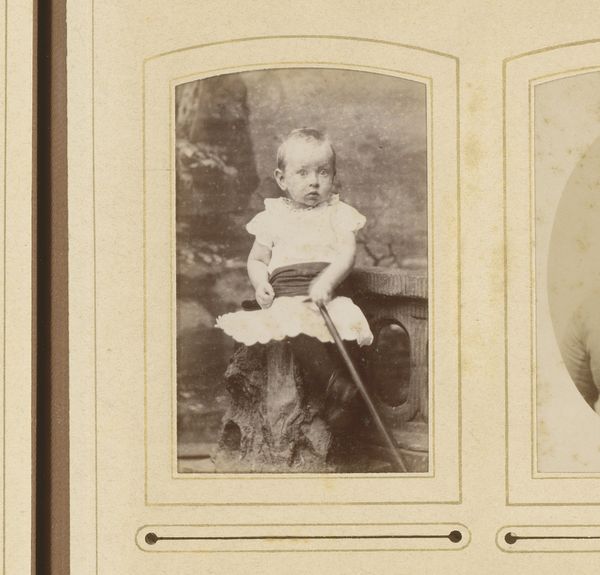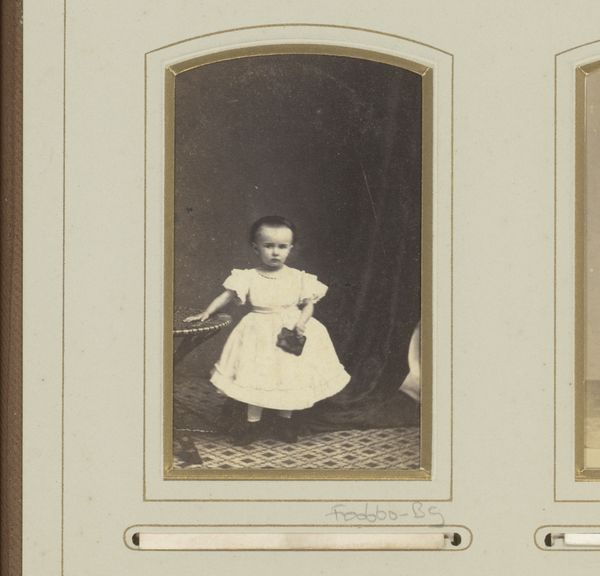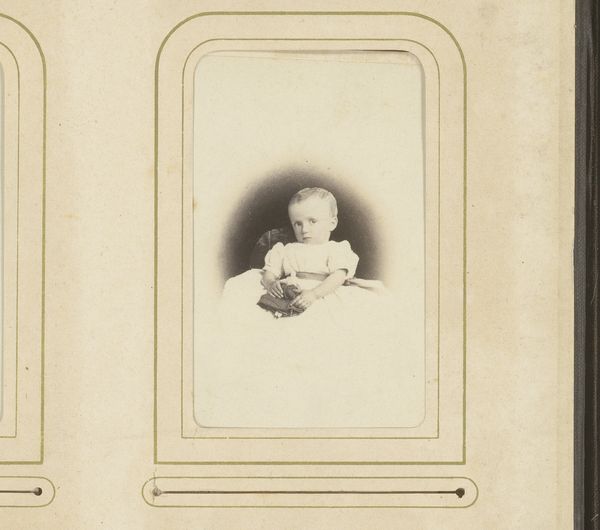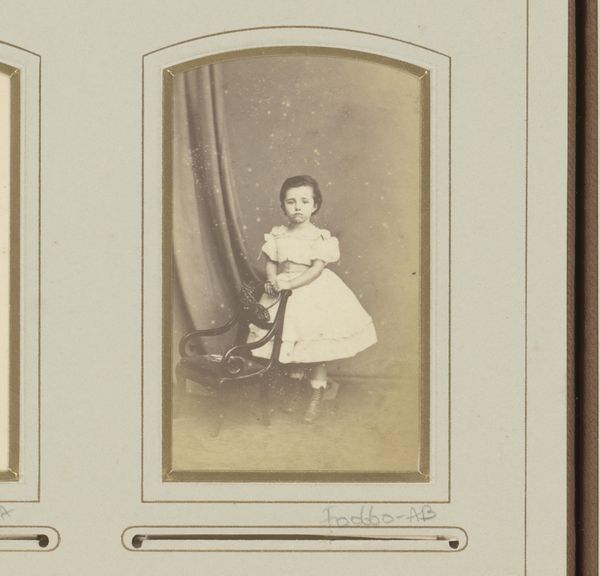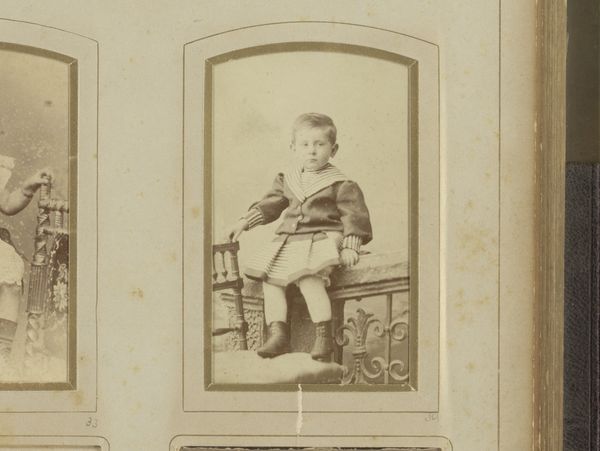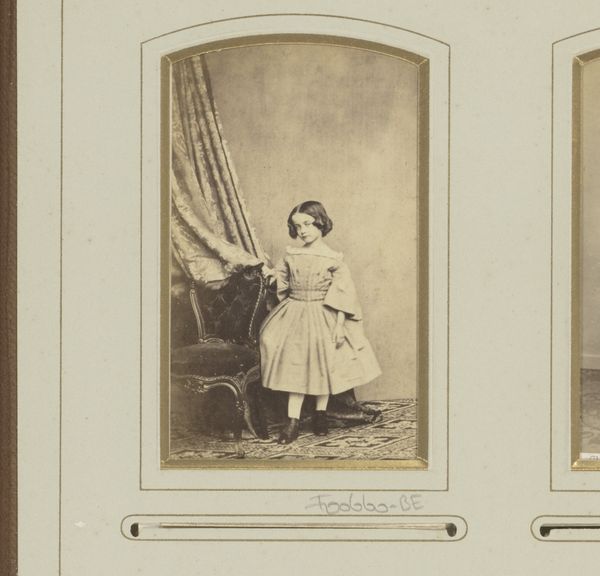
Portret van een meisje in een witte jurk met mandje op een stoel op een tafel 1850 - 1900
0:00
0:00
Dimensions: height 84 mm, width 51 mm
Copyright: Rijks Museum: Open Domain
Curator: Before us we have a portrait dating from between 1850 and 1900, entitled "Portret van een meisje in een witte jurk met mandje op een stoel op een tafel." The artwork utilizes the albumen print process of photography. Editor: It’s immediately striking how the monochromatic palette creates a soft, almost dreamlike atmosphere. The textures, though—the drape of the fabric, the woven basket—are remarkably well-defined, giving the image depth. Curator: The artist is working within the Pictorialism style, an approach that valued artistic effect over objective representation, aligning photography more closely with painting. We observe the manipulation of focus and tonality, quite evident in this portrait. Editor: Absolutely. And this aesthetic choice speaks volumes. The girl, perched atop a table rather precariously, clutches the basket, which reads as both protection and burden. The visual narrative hinges on this symbolism, doesn't it? Curator: Yes, let's examine that basket. Woven objects frequently suggest domesticity, labor, perhaps even containment. Here, combined with the innocence of the young girl in her white dress, the visual motif is richly ambiguous. Editor: It's curious that they chose such a formal pose. One almost gets a sense of staged serenity and quiet patience imposed upon the subject—like many aspects of Victorian ideals around childhood at that time. I feel that even a young sitter carries a weight of representation in her hand. Curator: Interesting… The compositional balance is another notable attribute. The photographer has intentionally positioned the sitter on a stable cube. Perhaps its about elevating the sitter to reinforce both literal and symbolic hierarchy in a static form? Editor: Indeed. As an exercise in form and the representation of ideals of innocence and visual metaphor, this image provides so much insight into a bygone era, one filled with its own careful symbols. Curator: Precisely, observing closely its balance of shadow and light, its material rendering, allows us a window into artistic photographic expression of that period. Editor: And for me, it is the confluence of iconographies – childhood, domesticity, innocence - that grants it such lingering power.
Comments
No comments
Be the first to comment and join the conversation on the ultimate creative platform.
